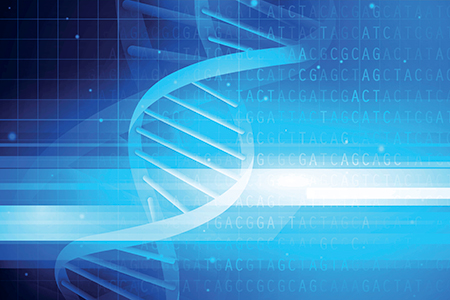
Reproducibility Requires Genetic Quality
The genetic integrity of laboratory mice and rats is an important contributor to research reproducibility, which is why commercial animal vendors invest in maintaining the genetic quality of standard inbred and outbred strains.As the technology to produce genetically engineered models (GEMs) becomes more widespread, a growing majority of GEMs are bred and used at individual institutions. This decentralization has created concerns regarding research tool integrity.
As Fahey et al. state in their call for greater awareness and action on this issue, "These mouse and rat mutants are a tremendous genetic resource; however, the awareness of their genetic integrity such as genetic background and genotyping of these models is not always carefully monitored... to be able to compare and interpret experimental information, it becomes critical to have genetically well-characterized mouse and rat mutants1."
How Genetic Quality is Compromised
GEMs created via embryonic stem (ES) cell technologies were often previously created using various 129 strain-derived ES cells. While the nomenclature may seem similar, 129 strains have significant genetic diversity and cannot be considered synonymous. They were renamed in the late 1990's to reflect these differences and grouped into four main families:- Parental (nomenclature starting 129P)
- Steel (129S)
- Ter (129T)
- Genetically contaminated (129X)
Many of those early 129-derived GEM lines were subsequently backcrossed to B6. But which B6, and how congenic is the end strain? C57BL/6 substrains also vary, with some known phenotypic consequences. C57BL/6-derived ES cells eventually became available, with nearly all derived from the C57BL/6NTac substrain. Again, contamination was introduced to many strains through breeding to other B6 substrains.
Confirming Strain Background
– Dr. Patrocinio Vergara
Esteras, Universitat Autonoma
de Barcelona, ICLAS
The Dire Consequences of Poor Genetic Quality
What is the impact of poorly defined or genetically contaminated animals?- Data which cannot be reproduced
- Wasted research time and funding
- Poor reflection on a researcher's reputation
- The unethical use of research animals with no added benefit to society
Elements of a Genetic Integrity Program
Colony management
Proper colony management is one of the most important contributors towards genetic quality. For inbred strains, bred in-house, genetic drift may be avoided by periodically refreshing breeding stock. This may be accomplished either by purchasing new breeding stock from a commercial vendor or by restarting breeding stock from cryopreserved materials.Careful record-keeping is important. Front line technicians are critical here, as their observations are often the first sign of a problem, genetic or otherwise.
Genetic monitoring
Multiple DNA-based methods exist for genetic monitoring of inbred strains. The most common uses SNP to distinguish between strains. Panels of SNPs with different densities can be used for strain/substrain identification as well as routine genetic monitoring.Reference DNA for Key Strains Now Available from ICLAS
The International Council for Laboratory Animal Science (ICLAS) aims to foster improved genetic quality across research institutions worldwide. Toward that end, ICLAS, working with major breeders, established a Genetic Monitoring Reference Program:Genomic DNA from the reference strains is available to any institution worldwide. This DNA serves as important controls for in-house genetic monitoring programs and may additionally be used to develop new genetic monitoring tools, such as improved SNP panels.
Advantages of working with ICLAS to obtain reference DNA include:
- No need to obtain and use additional live animals as DNA sources
- Assurance that reference DNA is from pedigreed animals; such pedigreed animals are not otherwise easily available
- DNA has been QC'd and tested for compatibility with different platforms such as PCR and Illumina SNP genotyping arrays
- Ability to obtain a full set of DNA from twelve strains at once, saving time and money
Awareness of the issue is only the first step towards improved genetic integrity and research reproducibility. Genetic assessment of GEM strains, with reference DNA for comparison, can identify existing issues as well as prevent future ones.
















.jpg)

.jpg)
.jpg)
.jpg)
.jpg)





.jpg)


.jpg)
.jpg)




.jpg)




.jpg)

.jpg)




